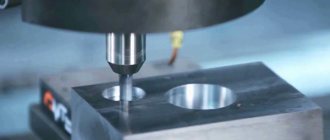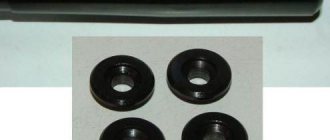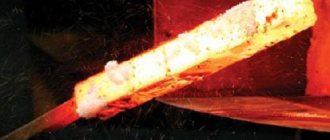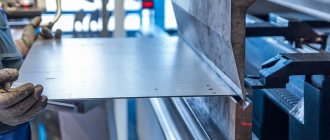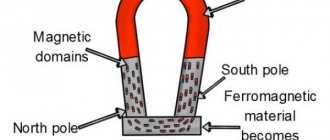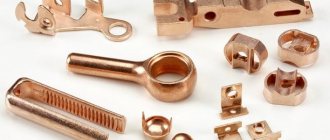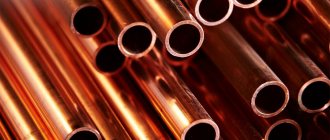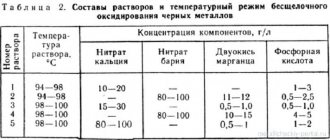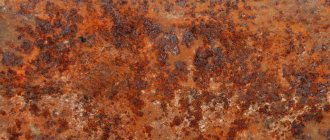Hello everyone) The recording makes no claims to the scientific nature and purity of the experiment.
When using various types of coatings in body repair - from primers to anti-corrosive coatings - you always ask the question: “What is the best way to protect bare metal, what combination of materials to choose?
On forums, on Drive, in garages - everywhere there are crowds of different people with cosmic convictions about the use of this or that product. Moreover, opinions are most often not supported by anything other than personal speculation, and sometimes even contradict each other and common sense.
I decided to figure it out for myself, to see with my own eyes how this or that protective material behaves. To do this, I took several plates of metal, cleaned it, degreased it, piled it with all sorts of shit, and hung it on the street in the open air.
? — Why didn’t you use a saline solution or just dip it in water? “I don’t like it that way, I want it in the fresh air, where they work on the car.” ? — Why didn’t you use all kinds of sandwich combinations? - Because this would lead to a large number of samples, I don’t need these garlands in the yard.
I thought about it and decided that for the purity of the experiment, it is necessary to understand the capabilities of each material separately - from this it is easier to put together a picture of their joint work. For example, if there is rust after the converter and after the acrylic primer, then there is no point in smearing one on top of the other and expecting that there will be no rust.
As subjects, I took the materials that I use in my work:
From left to right: 1. Movil. Trushny, from the country in which I was born - the USSR. 2. Cannon fat. Modern. 3. Rust converter based on phosphoric acid. Not the tsinkar that has a sprinkle, the other one, Belarusian, cheap. 4. Cartonin F rust converter based on iodine. Polish product. 5. 1K Spectral epoxy primer in a can. 6. 2K Epoxy Primer Novol. 7. 2K Etching Primer Novol. 8. 2K Acrylic primer Reoflex.
Now the samples they processed:
From left to right: 1. Movil / Cannon fat. On the back
— not processed in any way, CONTROL, see below 2. Belarusian Tsinkar.
Applied, not washed off. 3. Cartonin F. After the reaction, the coating becomes black. 4. 2K Epoxy primer. On the back
- 1K Epoxy primer in can 5. 2K Etching primer / same, but
+ on top
2K Acrylic primer.
On the back
is just 2K Acrylic primer on bare metal.
Back sides of some records:
In total, we have 9 different coating options, not counting the control plate. All are hung outdoors.
They've been hanging for a couple of weeks now; with the first rains, the control plate became a little rusty. I’ll tell you about the rest in the next post; not enough time has passed to draw conclusions. I plan to marinate them outside all winter.
Before it’s too late, you can add some more options, write who wants to see which ones.
Share the post, it may help someone avoid mistakes.
Metal pipes have not yet completely disappeared from our everyday life, having given way to plastic ones. Because metal, compared to plastic, is more resistant to high pressure, can withstand significantly greater mechanical loads, is resistant to temperature changes, and has a much lower coefficient of thermal expansion.
The main enemy of metal is corrosion. This is especially true for underground metal pipelines.
Functions and material of the fence
The fence is intended for simple and specialized fencing of territory: privately owned land plots, parking areas, recreation areas, construction and specially protected sites, animal pens. Also, fences are often a decorative element in landscape design or form a single composition with architectural solutions.
This variety of functionality makes it possible to use different materials for their construction: a regular wooden or metal picket fence, a decorative picket fence in the “Ranch” style, multi-colored profiled sheets, chain-link mesh, welded, sectional, forged, asbestos-cement and concrete spans. Like any structure, a fence requires the creation of some kind of base on which the material is attached. For a fence, the pillars are such a basis.
Corrosion on metal objects. 3 ways to fix it
Advertising billboards, bollards, poles, road elements and other street metal structures are constantly subject to corrosion. These processes cannot be stopped. However, they can be prevented or slowed down. For this purpose, different types of anti-corrosion treatment are used. They can be divided into 3 groups:
- paints and varnishes;
- metal coatings;
- non-metallic coatings.
Of course, there are many options and varieties of these coatings on the construction market. But, of course, we will talk to you about the main ones.
Pole material
Regardless of the choice of material for the fence itself, the posts can be made from:
Galvanizing
Its essence is that the product is coated with a layer of a substance with greater chemical activity than that of the protected layer. The surest way to create such protection is cold galvanizing. It is many times more effective than conventional zinc paints. But, along with it, there are other methods. Diffusion, sputtering, galvanization, etc.
Where are zinc compounds used? Mainly on flat metal structures (for example, advertising). But, however, corrosion protection with zinc is also suitable for:
- supporting elements of bridges;
- roofs and fences;
- tanks and containers;
- building structures;
- pillars;
- pipes
Why choose zinc? Due to a number of advantages... Zinc solutions are inexpensive. They are quite resistant to mechanical stress. In addition, with the correct application technology, they do not peel off for many years. Corrosion is practically powerless against galvanized metal.
After galvanizing, the iron is also painted with decorative paints. This is more effective in aggressive environments. And, undoubtedly, more aesthetically pleasing.
Metal advantage
The universal material for making fence posts is metal products, because in the vast majority of fence installation cases welding is used.
A special quality of metal poles is their durability. No matter how you treat a wooden beam, it will rot much faster than the metal will collapse.
The process of metal corrosion occurs on average at 0.15 – 0.2 mm per year. This depends on external weather and climatic conditions, the composition of the metal and the quality of its processing. A positive advantage of metal poles is reliability and strength. Asbestos concrete pipes are not subject to corrosion and do not require additional maintenance, but they are fragile and cannot withstand rough mechanical loads.
Line of anti-corrosion products "WD-40"
The American company produces a popular line of anti-corrosion products on the market - “WD-40”. The drugs are widely used by both professionals and home craftsmen.
The line includes five products: long-lasting inhibitor, protective lithium grease, waterproof silicone grease, spray and rust removal solution.
Long acting inhibitor
The drug is used for year-round protection of metal products located outdoors. The manufacturer guarantees rust protection for two years if the product is located indoors, and for outdoor items the warranty extends for a year.
The composition is a spray that includes a vapor-phase anti-corrosion inhibitor, which creates a protective layer on the metal surface, preventing direct contact of the material with air and moisture. The inhibitor is recommended to be used to protect locks, gas cylinders, working tools, door hinges, process chains and cables, steel doors, and automotive parts. The drug can also be used to treat any other items that are used in conditions of high humidity.
Corrosion
Metal corrosion is a natural phenomenon that cannot be completely prevented, but this destructive process can be significantly slowed down. The oxidation process occurs with the participation of oxygen and aqueous solutions containing acid, alkali or salt.
Iron is not found in nature in its pure form, but is found in iron ore. Humanity invented the production of steel and came up with ways to preserve it. Factories use methods of phosphating steel by immersing it in various solutions, as well as electrochemical treatment. This coating is in the nature of a primer and requires subsequent painting. Steel is coated with other metals. Cheaper ones are aluminum and zinc.
There are silicate coatings - these are different types of enamel. Enamel is fragile and not entirely suitable for a fence. Cement has approximately the same expansion temperature as steel and serves as an insulator against aggressive environments. Good insulation is a polymer film applied in several layers in the factory.
Chemical methods
Chemical methods involve the use of the following groups of drugs:
- rust converters;
- acids (primarily phosphoric acid);
- folk remedies.
Orthophosphoric acid
This substance is a classic solvent and is included in many rust control products.
The method of using phosphoric acid is described below:
- The substance is applied in a thin layer to the area affected by corrosion.
- Next you need to wait for 30 minutes until the reaction is completed.
- The procedure is completed by wiping the treated surface dry.
Phosphoric acid removes traces of rust and also promotes the formation of a phosphate water-repellent film. This film slows down the process of metal oxidation, preventing further development of the corrosion process.
To remove rust, use a 30% acid solution. The advantage of orthophosphoric acid compared to other acids (for example, sulfuric acid) is that it has a more gentle effect on the metal.
Rust converters
The principle of rust conversion products is to convert corrosive products into a harmless or protective layer, which can then be treated with paint or varnish.
Listed below are the most famous rust converters available on the market:
- VSN-1. After applying this acid neutralizer, the treated area turns gray. All that remains is to wipe off the stain with a dry cloth along with any remaining rust.
- Spray aerosol based on zinc “Zinkor-Auto”. This product is a degreasing solution that can remove traces of corrosion from a metal surface. After applying the solution, a protective film is formed on the surface.
- Rust converter SF-1. The composition is made on the basis of phosphates. Used to treat steel, cast iron, aluminum and galvanized surfaces before applying varnish or paint. The modifier has an inhibitory effect, since the film that appears on the metal after its processing extends the service life of the painted surface by 10-12 years.
- Rust modifier "Berner". The drug has a deoxidizing effect. The basis of the modifier is molybdenum. The product is effective even on heavily rusted surfaces. For example, the converter is used to process rusty bolts that cannot be removed using standard means. Available in spray form.
- Anti-corrosion agent B-52. This acid modifier is available in gel form. Its main advantage is the lack of spreading over the surface. After the rust has dissolved, the remaining gel is washed off the metal.
Treatment
The durability of the metal depends on the grade of steel. More precisely, there is alloy steel with different additives. But for a simple fence, this is an expensive pleasure. Usually they use factory rolled metal, or make poles with their own hands from what they can get. For temporary fences, poles welded from pieces of iron or previously used but still strong water supply pipes are suitable.
It is difficult to clean the internal cavity of the pipe, but the rust is removed from the outside using an iron brush and treated with a grinder or grinder. If necessary, degrease and apply a primer for metal, for example, GF-021. After the primer has dried, the pipe is painted in two layers.
To paint metal, the most common oil paint PF-115 is suitable. For the lazy, there is three-in-one paint. It neutralizes rust, primes and creates a protective surface.
But in practice, it is better not to do without preliminary mechanical treatment; it is necessary to at least clean the metal with sandpaper.
The best solution for choosing new fence posts would be a combined version of metal coated with zinc and polymer film. Factory metal rolling produces painting, observing all technologies. It is best to purchase poles that are ready for installation, as this will significantly save time and labor costs. However, this option cannot be called financially economical.
In practice, most often iron poles are primed and painted with oil paint or bitumen varnish.
There are special cans of spray paint that are convenient to use when welding. Powder coating will be more expensive and technically more difficult. The thinner the coating layer, the more durable the protection. Therefore, apply several layers with a spray or thoroughly rub in with a brush, avoiding air bubbles that provoke an oxide reaction.
Soil is a more aggressive environment than air. Therefore, the part of the metal located in the ground is insulated with concrete or bitumen mastic. Rolled insulators are not suitable for these purposes. Scale generated during welding stimulates metal corrosion. It must be removed with a grinder.
Protective paints and enamels
Anti-corrosion paints. These are liquids that serve to protect metals from corrosion, as well as to paint them in certain colors. Although the paint forms a film on the product, it allows air to pass through. So, at a minimum, it needs to be supplemented with a primer.
Primer. This is a protective layer intermediate between metal and paint. Due to the fact that primers contain zinc, they protect iron from corrosion. In addition, there are primer compositions that are classified as insulating. They give metal products protection against water.
Enamel 3 in 1. And these are 3 components collected together: primer, paint and rust converters. The latter are needed in order to eliminate rust and stop its development.
In general, it must be said that paints are not such reliable protection against corrosion. Firstly, they are used rather for prevention. Secondly, to hide existing rust.
After 3-5 years, corrosion on painted metal appears again. So paint coatings should probably be considered only in two cases. Or as a temporary option. Or as a preliminary method of protection.
Heat-resistant coatings are a special type of anti-corrosion enamels. On the one hand, such paints can withstand sudden temperature changes. On the other hand, they are classified as fireproof.
Ground influence and installation
The choice of metal poles also depends on the installation method, and this, in turn, depends on the condition of the soil. For a light fence, you just need to drive a post into the ground if it is dense (gray soil, clay, sand). Two people are involved in the work - one drives it in, and the other holds the post, checking it for level in two vertical planes.
In order not to damage the top of the pillar with blows, some kind of homemade iron cover is put on it.
The most dangerous, wear-resistant area of a pole is where it comes out of the ground. Here two environments with different temperatures and mechanical loads meet. For this reason, microcracks occur, contributing to the destruction of the structure. The quality of insulation of this place needs to be given more attention:
- When soil heaves, the butting method is used. Using a hand drill, pour a small sand cushion into the drilled hole and compact it. Insert the post strictly vertically and fill the hole with crushed stone and sand in small portions. Each portion is compacted by pouring water. The last 20 cm of the pillar is filled with concrete.
- There is also a more stationary method of pit concreting. The posts must have a welded heel, or a through opening 15-20 cm in length is cut out in the lower part, into which concrete is poured. This is necessary for better fixation of the post.
- In heaving soil, you can fill the heel of the pillar with concrete by 30-40 cm, and cover the remaining distance to the surface with a plastic pipe used for sewerage. A large-diameter plastic pipe is placed on a metal one, leaving 5-10 cm above the ground surface. The cavity between the pipes is filled with cement, and the outside is filled in, tamping the excavated earth.
- If groundwater is located close to the surface, or the ground is swampy, you cannot do without a strip foundation for the fence.
The length of the pillars going into the ground must be at least one third of the total length of the pillar. The depth of concreting is selected to the depth of soil freezing.
From the video below you will learn how to properly install a fence post.
General provisions
Corrosion processes are the oxidation of a metal, in which its atoms change from a free state, losing their electrons, to an ionic state . An underground pipeline is subject to two types of corrosion, the nature of which is worth understanding before starting to deal with them. Therefore, I will pay a little attention to their description:
Soil
Diagram showing the effects of soil corrosion on a metal pipeline
As you probably guessed from the name and the accompanying diagram, soil corrosion occurs due to contact of steel with soil. In turn, it is divided into the following subspecies:
- Chemical _ Appears as a result of exposure to iron by gases and non-electrolytes of the liquid type. It is noteworthy that with it the material is destroyed evenly, and the formation of through holes is almost impossible, which makes this type of corrosion process the least dangerous for a highway laid underground;
- Electrochemical . The metal acts as an electrode, and groundwater, of which there is an incredible amount in our climate zone, acts as an electrolyte. The ongoing process is very similar to the work of a galvanic couple and provokes the destruction of point areas on the surface of the pipes, which ultimately leads to their emergency condition;
The result of damage to the wall of a steel pipe by electromechanical corrosion
- Electric . It occurs due to the impact of stray currents on steel, which can “drain” from rails, substations and other electrified devices that fill modern cities. It is the most dangerous and destructive corrosion process.
Internal corrosion
Diagram showing the effects of internal corrosion on a metal pipeline
If the transported liquid has a low hydrogen index, but its content of oxygen, sulfates and chlorides, on the contrary, is high, then internal corrosion processes cannot be avoided, as a result of which:
- The level of roughness of the inner surface of the wall increases , which leads to a decrease in water permeability;
The inside of the pipeline becomes rougher due to the effects of internal corrosion
- The quality of the transported liquid deteriorates as rust gets into it;
- Over time, a through hole may appear , which can cause a pipeline rupture.
Corrosion and polymer coatings
Another popular type of anti-corrosion coating is polymer-based. These include, for example, polyurethane paints for protection. Epoxy resins. Films made of acrylic and polyethylene. As well as many other paints and coatings.
What are the advantages of polymer compounds? The fact is that they create a good barrier between the environment and the metal. And on top of that, they last longer than conventional paints. At least until 10 years old.
Take, for example, durable polyurethane coatings with a waterproofing function. They protect metals:
- from water;
- as well as from mechanical damage.
But, in addition to this, they also paint metal objects in bright colors. So, with their help, products can be given the desired design and appearance.
Polymers are usually applied hot. By brush, by dipping, by vortex or thermal spraying. Once hardened, these coatings are converted into protective films. Their thickness, as a rule, starts from 2 mm.
There are polymer paints for protecting pipes, underground structures and tanks. They are resistant to gasoline, oils and chemicals. Very durable. And, moreover, they can serve in particularly harsh conditions.
Other metal coatings
Aluminum. Another way to protect metal (in particular iron) is to apply an oxide film of aluminum to it. It will protect metal surfaces from air and, as a result, from corrosion. Aluminum compounds, like zinc, are chosen because of their affordable prices.
Chromium-based alloys. The chromium content of 12% in steel turns it into stainless steel. That is, steel that has very high resistance to corrosion. However, the anti-corrosion properties of steels are enhanced by other additives. This, for example, could be nickel, cobalt or copper.
All these coatings are applied:
- due to galvanization;
- plasma spraying;
- supersonic and other methods.
Metal coatings, of course, provide greater reliability than paints. But here, of course, it is important to choose exactly the metal that suits the layer being protected!

